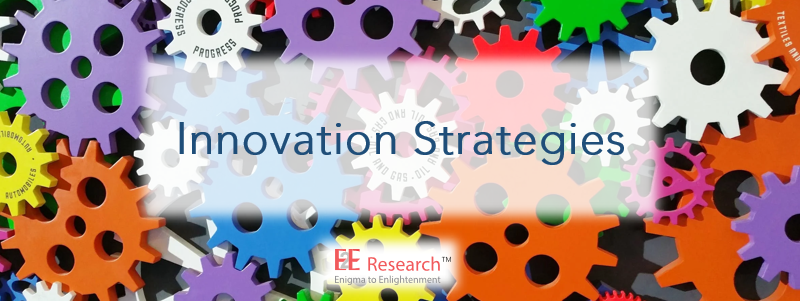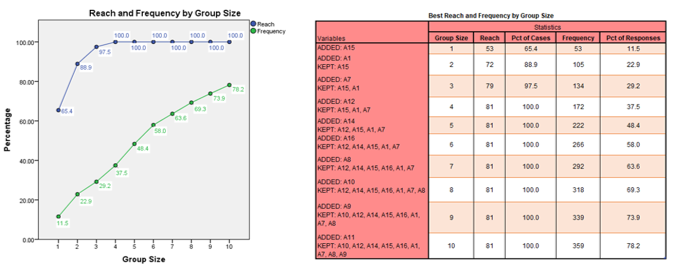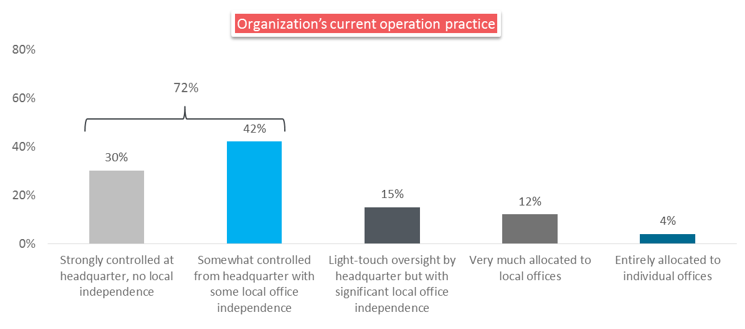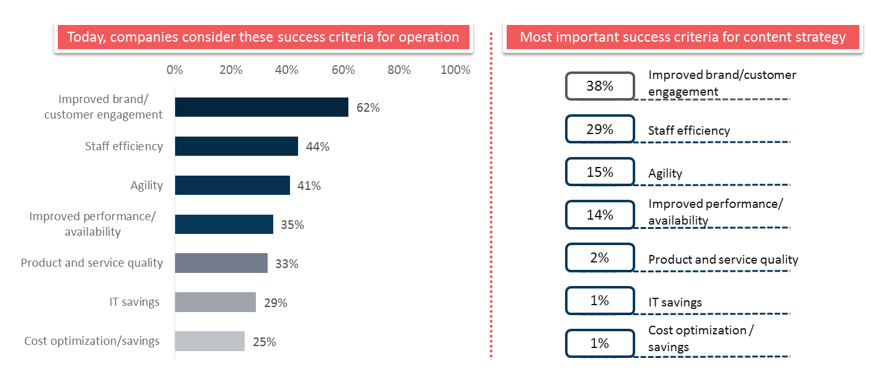
Innovate or die.
I suspect many of us have heard that quote, usually attributed to Peter Drucker.
The goal of innovation is to create products or services that have original value, perhaps in response to changing industries or solving impeding social, health, or economic challenges. With an effective strategy for bringing about that innovation, your brand can achieve real change and growth. Without an innovation strategy, well, your brand could simply wither away and disappear.
Benefits of Innovation
Is it worth the financial burden to take time away from day-to-day production to focus on innovation? Given the following benefits, successful marketing and business leaders would say yes.
- Remain relevant. In a world that’s constantly evolving culturally, economically, and politically, innovation helps brands remain relevant to people of today, not ten or fifty years ago when the brand was first launched. For example, today, brands take care to understand that gender is a social construct, not a precise measurement that dictates women use pink razors and men use black razors. And, remaining relevant means we work to understand changing consumer perceptions towards online ordering, something that really picked up over the last three years.
- Develop new products. For creative minds, one of the key benefits of innovation is creating brand new products like pet food made from insect protein. Perhaps you’ve discovered a new pain point, audience segment, journey, or channel that warrants building a for-purpose product. Even better, starting from scratch means you can build in privacy, accessibility, sustainability, and many other core features right from the beginning rather than trying to hack them in at a later date.
- Improve your existing products. Innovation is not just about creating new products. It’s also about improving the efficacy of existing products and appealing to new target audiences with those existing products. Growth comes from creating a more valuable product for your existing customers, and new value for new customers.
- Optimize your costs. Innovation can also take place in systems and processes. New methods of building a product, delivering a service, or running operations can speed things up or make them less expensive. For example, we now have the option to use automated signature tools rather than physically mailing or even emailing business contracts.
Of course, all of these benefits contribute to the growth and expansion of the business with new or more desirable revenue streams.
Benefits of an Innovation Strategy
Innovating alone is insufficient to maintain growth. Creating an effective strategy to bring those innovations to life is essential for preparing for long-term unanticipated lows and desirable highs. There are other benefits as well.
- Align everyone to the same goals. Creating an innovation strategy helps ensure efforts in all departments and groups are in keeping with the mission and vision of your business. When everyone has the same understanding of how innovation fits into the business growth strategy, every department can aim for the same, overarching goals rather than pursuing unrelated and unfocused individual goals.
- Focus resources. When everyone is aligned to the same goals, company resources, whether financial, personnel, or otherwise will be used much more wisely. Less waste, less distraction, and more energy spent in the right places.
- No resting on laurels. It’s easy to recall the good old days when you accomplished that awesome ‘thing.’ But 5 years ago is ancient in today’s world. Hundreds of new products and companies have since been launched, all of which have the potential to knock your brand out of the top 10 or top 1000 spot. You need to keep on proving that you deserve to be in the top 10 spot or someone else will. Without a strategy to stay there…. you won’t.
What Does a Successful Innovation Strategy Look Like
Though every company has a unique innovation strategy, successful strategies share a number of key characteristics.
- Continuous rather than ad hoc. Rather than developing innovations in response to external events, successful strategies have a goal of continuous improvement. Time and funds for innovation are built into every process. It’s expected at every stage from every person.
- Calculated risks. Playing it safe is rarely a good attribute of successful strategies. Be prepared to take risks along the way. Stretch your ideas just out of bounds to see what could be. Iterate, test, repeat.
- Embrace failure. Successful innovation strategies embrace every small and large failure that inevitably happens along the way, recognizing that each one is a learning opportunity. Learn from each challenge and put processes into place to ensure those mistakes can’t happen again. Seek out and embrace criticisms and challenges. Caught early, resolving small challenges will prevent massive mistakes.
- Measure the efforts. Successful strategies keep count. Count the failures, the successes, the ideas, the launches. Set fair expectations for both contributors and the leadership team around those metrics so everyone can monitor growth.
- Create and stick to timelines. Create fair timelines and stick to them. Time spent on innovations that get repeatedly delayed and never become reality are a waste of everyone’s time.
- Get stakeholder buy-in. Rather than waiting until an innovation is ready to launch, successful innovation strategies get buy-in from the leadership team from day one to ensure those innovations are in keeping with the long-term goals of the company. Without early buy-in and ongoing progress reports, those efforts could be completely wasted.
What’s Next?
Are you ready to get creative and put innovation at the top of your strategic plan? Our expert team is ready to help you gain new insights about your buyers, brands, and business that will support your next big innovation! Email your project specifications to our research experts using Projects at E2Eresearch dot com. We’d love to help you turn your enigmas into enlightenment!
Podcasts You Might Like
- How I Built This with Guy Raz
- Women in Innovation podcast
- What is Innovation with Jared Simmons
- Moonshoots Podcast: Learning Out Loud with Mike Parsons & Mark Pearson Freeland
Books You Might Like
- The Innovator’s Dilemma: When New Technologies Cause Great Firms to Fail by Clayton M. Christenson
- 101 Design Methods: A Structured Approach for Driving Innovation in Your Organization by Vijay Kumar
- Ten Types of Innovation: The Discipline of Building Breakthroughs by Larry Keeley, Helen Walters, and Ryan Pikkel.
Learn more from our case studies
- Identifying An Optimal Set of Flavor Variants to Achieve Incremental Reach | case study
- Increasing Customer Acceptance For Controversial Pet Food Format – A survey case study
- Monitoring Blockchain Adoption Over Time | A survey case study
- Stretching Brand Equity into White Spaces Using Data Fusion – A pharmaceutical data analytics case study





 A lot of market research starts by truly understanding a specific audience. Who are they – what are their hobbies, where do they live, where do they work, what does their family look like? It’s really easy to calculate a median age and the percentage of customers who are female but the last few years have taught us a lot about intersectionality – it’s not just “women,” it’s “disabled Black women.” In the research world, we understand this as customer segments or personas.
A lot of market research starts by truly understanding a specific audience. Who are they – what are their hobbies, where do they live, where do they work, what does their family look like? It’s really easy to calculate a median age and the percentage of customers who are female but the last few years have taught us a lot about intersectionality – it’s not just “women,” it’s “disabled Black women.” In the research world, we understand this as customer segments or personas. If you’ve written a questionnaire before, you know how important this tip is. Sure, you could write a questionnaire as if you were Charles Dickens showing off his stunning, grammatically correct 200-word sentences with multiple, embedded clauses.
If you’ve written a questionnaire before, you know how important this tip is. Sure, you could write a questionnaire as if you were Charles Dickens showing off his stunning, grammatically correct 200-word sentences with multiple, embedded clauses. How do you get colleagues to share your research? Easy! Well, it’s not that easy. Storytelling is a necessary skill that will carry your research results throughout the company. Let people know what is exciting about the insights, how they could be used to reach consumers in unexpected ways, how they could personally benefit from understanding the results.
How do you get colleagues to share your research? Easy! Well, it’s not that easy. Storytelling is a necessary skill that will carry your research results throughout the company. Let people know what is exciting about the insights, how they could be used to reach consumers in unexpected ways, how they could personally benefit from understanding the results. You could build and execute a 5-year research plan.
You could build and execute a 5-year research plan.



